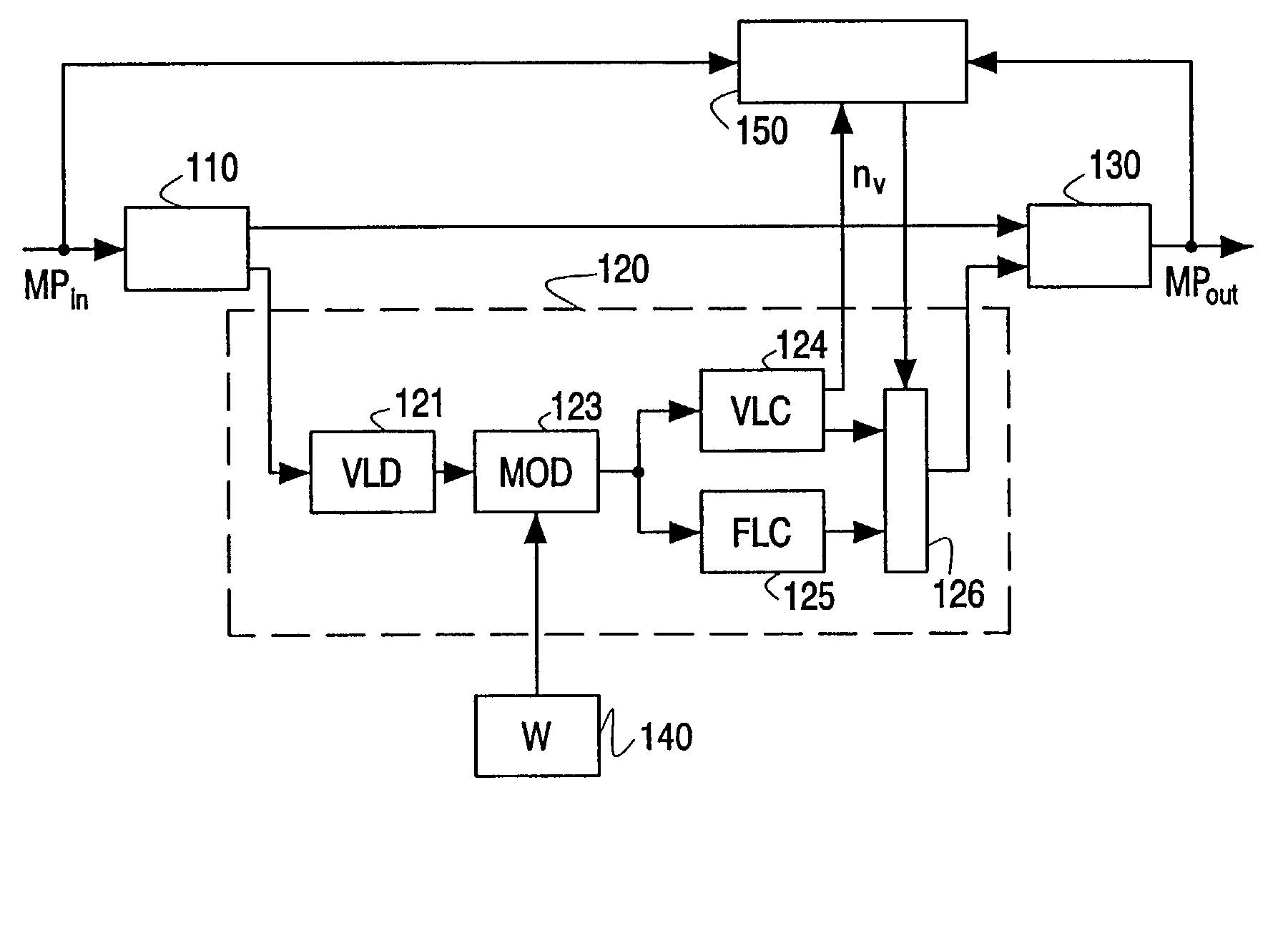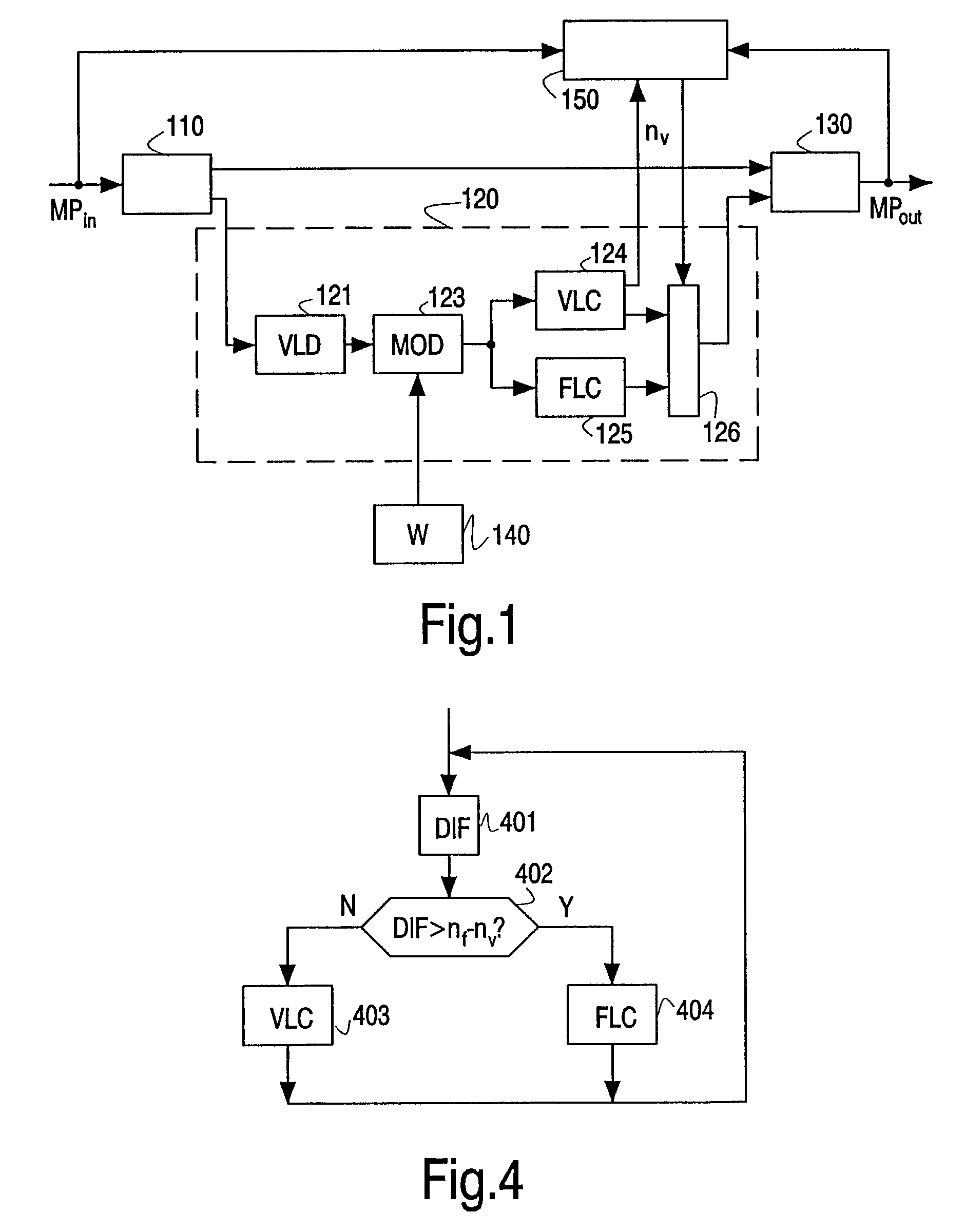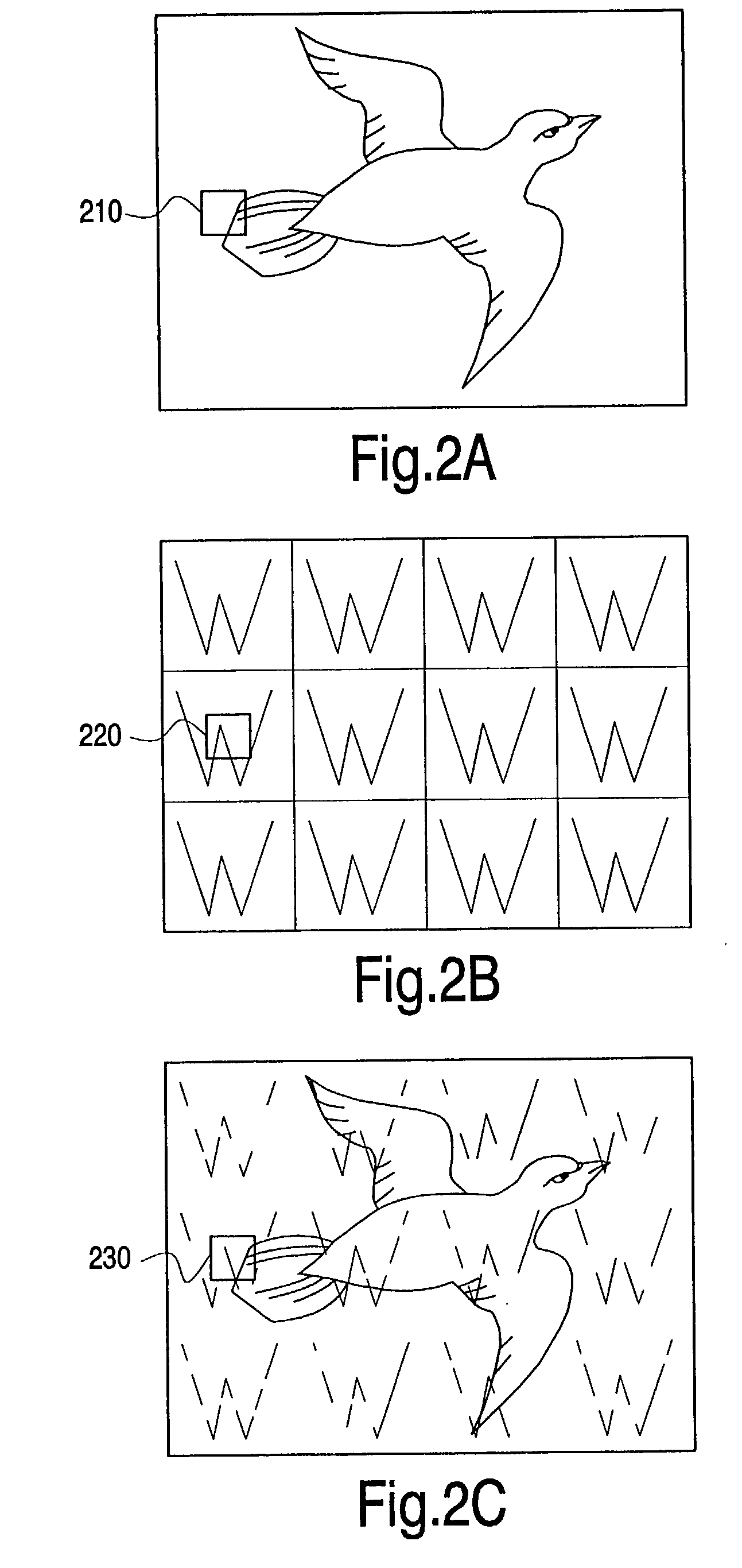Processing a compressed media signal
- Summary
- Abstract
- Description
- Claims
- Application Information
AI Technical Summary
Benefits of technology
Problems solved by technology
Method used
Image
Examples
Embodiment Construction
[0012] Although the invention is neither restricted to video signals nor to a particular compression standard it will now be described with reference to an arrangement for embedding a watermark in a video signal which is compressed in accordance with the MPEG2 standard. Note that the compressed signal may already have an embedded watermark. In that case, an additional watermark is embedded in the signal. This process of watermarking an already watermarked signal is usually referred to as "remarking".
[0013] FIG. 1 shows a schematic diagram of an arrangement carrying out a preferred embodiment of the method according to the invention. The arrangement comprises a parsing unit 110, a VLC processing unit 120, an output stage 130, a watermark buffer 140, and a bit rate control processor 150. The operation of the arrangement will be described with reference to FIGS. 2A-2C and 3A-3C.
[0014] The arrangement receives an MPEG video stream MP.sub.in which represents a sequence of video images. O...
PUM
 Login to View More
Login to View More Abstract
Description
Claims
Application Information
 Login to View More
Login to View More - R&D
- Intellectual Property
- Life Sciences
- Materials
- Tech Scout
- Unparalleled Data Quality
- Higher Quality Content
- 60% Fewer Hallucinations
Browse by: Latest US Patents, China's latest patents, Technical Efficacy Thesaurus, Application Domain, Technology Topic, Popular Technical Reports.
© 2025 PatSnap. All rights reserved.Legal|Privacy policy|Modern Slavery Act Transparency Statement|Sitemap|About US| Contact US: help@patsnap.com



